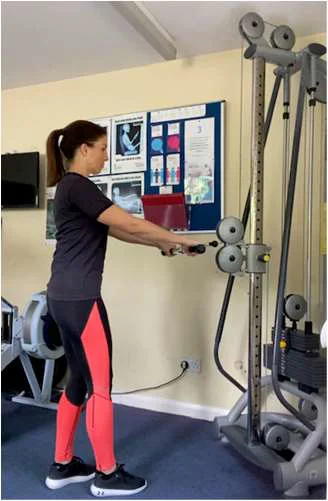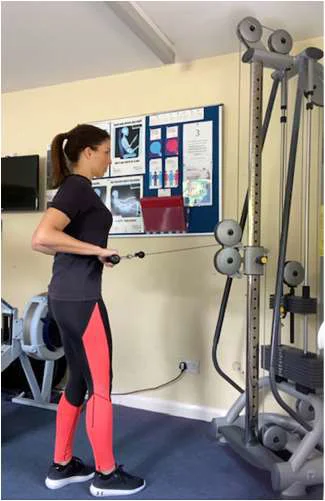Workout three
Warm-up
5-minute walk/light jog or steady bike (3-5 RPE should feel warmer, comfortable, and able to talk).
Mobilisation and dynamic stretching – wrist circles, shoulder rolls, arm circles, torso rotations, and flexions
Weight preparation – squats x 10 reps slow and controlled no weights, overhead press, rows, light weights (50% working set) 10 reps
Exercise
Sets: 2-5
Reps: 6-12
Rest: 60-90 seconds between each set
Weight: If you have access to a gym, with safe equipment in place to assist with lifting, such as a rack for overhead press, aim for the lower repetition range (6-8 reps), with higher sets (3-5) for the upper body, and lower sets for deadlift and squats (2-3).
- Deadlift
- Squat
- Overhead press
- Lat pulldown/pull ups
- Bench press/press ups
- Rows
Post Stretch
- General stretches include quadriceps, calf, hamstring, inner thigh, tricep, upper back, chest
- Hold for 15 – 30 seconds in a position of mild discomfort (not pain).
- Complete stretches from the flexibility page.
Guidance
1. Deadlift
There are various ways to deadlift, this is the conventional method. If using a bar, the bar needs to be over your toe line. Feet shoulder width apart.
Pull your hips backward, tipping from the hip, and then bend your knees, take a grip on the weight, if you are using a bar take an overhand grip. With core engaged, neutral alignment, and shoulders retracted, begin the upward phase by pulling hips forward to extend back to standing. For the downward phase, first push hips back, then bend knees and keep shoulders back, lower the weight keeping it close to shins, taking to the floor to complete one deadlift.
You can use other objects such as a dumbbell, kettlebell, or sandbag to complete deadlifts.
Focus on good form – shoulders back, core engaged, neutral alignment, try to tip from the hip.
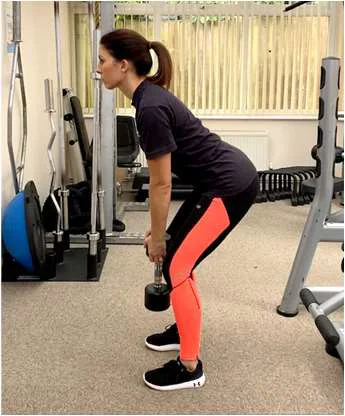
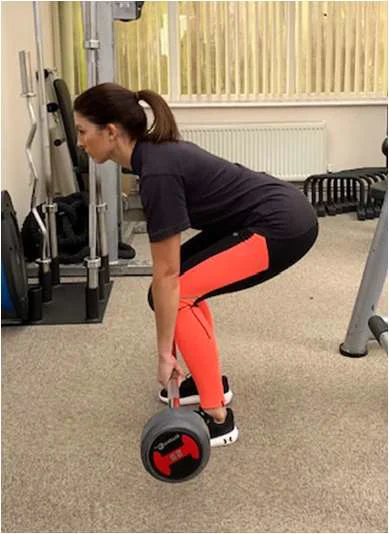
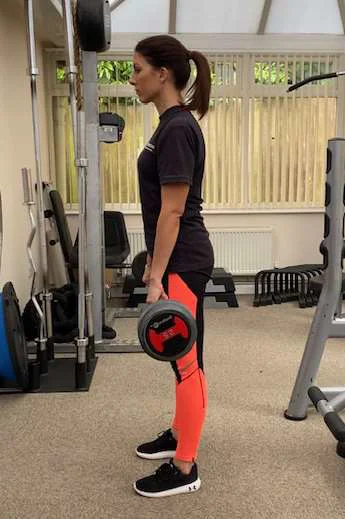
2. Squats
Follow previous guidance from workout one and squat information.
3. Overhead Press
Follow previous guidance from workout two. Continuing to use dumbbells or sandbags is fine. If you have access to a rack, then you can use choose to use a bar.
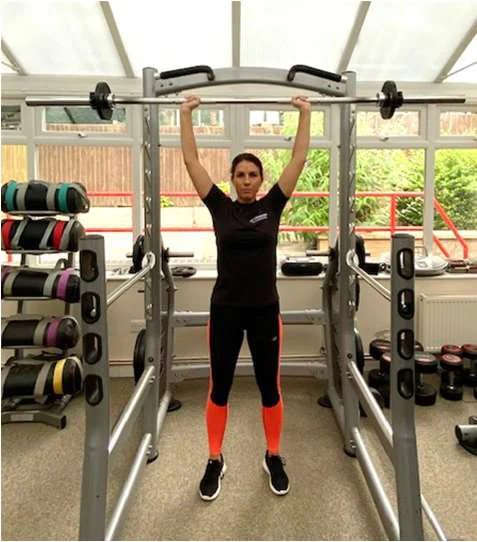
4. Lat Pulldown / Pull Up
Follow previous guidance from workout two.
5. Bench Press / Press Ups
Follow previous guidance from workout two.
6. Rows
Follow previous guidance from workout two for bent-over rows.
For an alternative option, you could choose standing rows using a cable machine.
Feet shoulder width apart can take a split stance to aid balance and provide stability.
Cable set to waist height, arms extended take an overhand grip on bar. Row the bar towards navel, retract shoulder blades, keep elbows into sides. Return with control to starting position.
